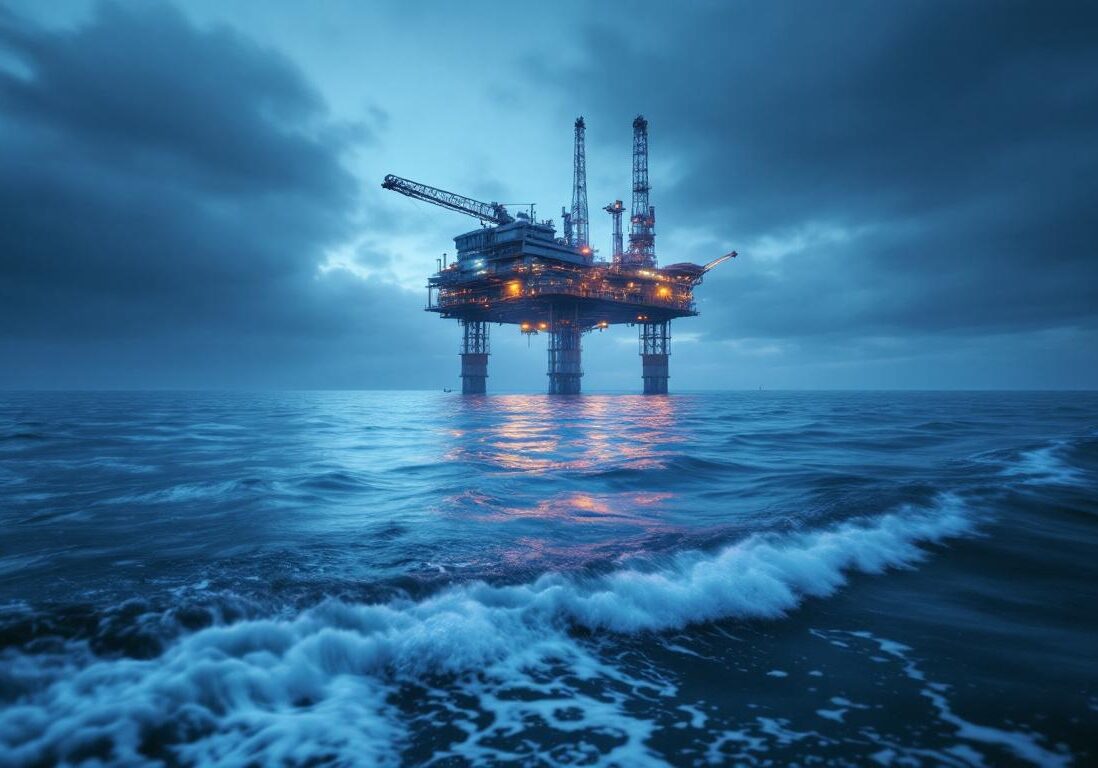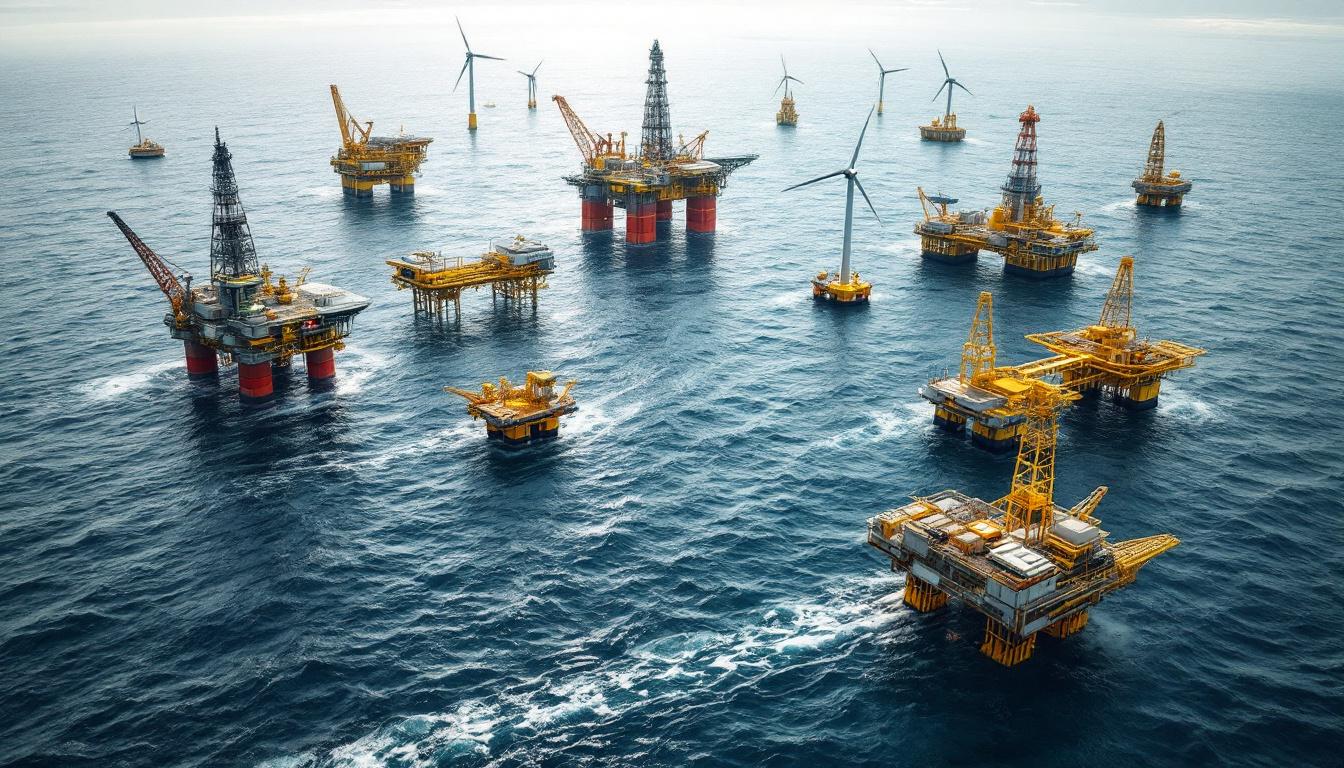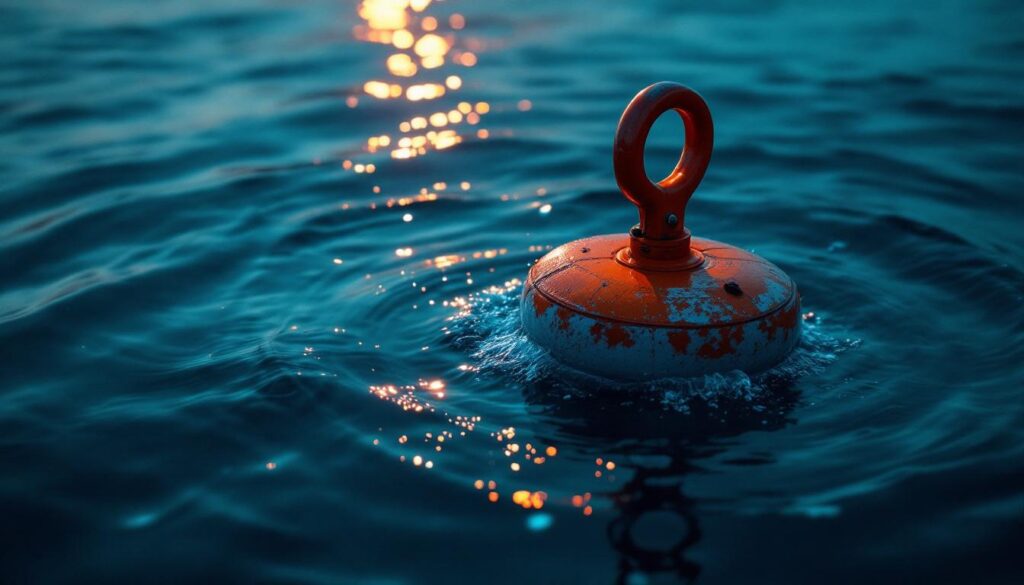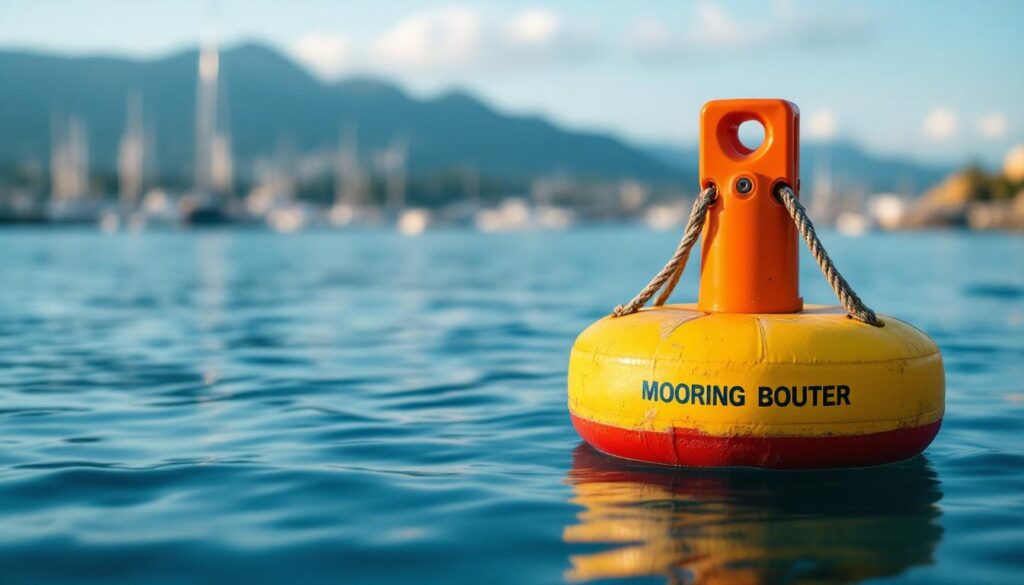Nov 21, 2025
The impact of buoyancy on offshore stability

Imagine a massive offshore platform standing firm against relentless waves, powerful winds, and shifting currents. Its ability to stay upright and operational hinges largely on a force invisible to the naked eye: buoyancy. Understanding how buoyancy influences offshore stability is crucial for engineers, operators, and anyone involved in marine structures.
What is buoyancy and why does it matter offshore?
Buoyancy is the upward force exerted by a fluid that opposes the weight of an object immersed in it. In the offshore environment, this force plays a pivotal role in keeping structures afloat and stable. Without buoyancy, platforms, floating production units, and vessels would sink or become dangerously unstable. The concept of buoyancy is not just a theoretical principle; it is a fundamental aspect of marine engineering that influences the design and operation of various offshore structures, from oil rigs to wind farms.
The principle of buoyancy is straightforward but its application offshore is complex. Structures must be designed to displace enough water to generate sufficient buoyant force while maintaining balance. This balance ensures the platform can resist tipping, listing, or capsizing even under extreme environmental conditions. Additionally, the dynamic nature of ocean environments, including waves, currents, and wind, adds layers of complexity to the design process. Engineers must consider these factors to ensure that the structures can withstand not only their own weight but also the forces exerted by the surrounding water.
How buoyancy interacts with weight and stability
Every offshore structure has a center of gravity (where its weight is concentrated) and a center of buoyancy (where the buoyant force acts). The relative positions of these two points determine the structure’s stability. If the center of buoyancy is directly below the center of gravity, the structure tends to return to an upright position after tilting. This relationship is crucial for the safety and functionality of offshore installations, as even slight misalignments can lead to significant issues.
When these points are misaligned, the structure may become unstable, increasing the risk of capsizing. Engineers work meticulously to design offshore platforms so that the buoyancy and weight forces create a righting moment, which is the tendency of the structure to resist tilting and return to equilibrium. The design process often involves sophisticated modeling and simulations to predict how structures will behave under various conditions. Furthermore, the materials used in construction, such as lightweight composites or reinforced steel, are selected not only for their strength but also for their ability to enhance buoyancy and stability. Understanding the interplay between buoyancy, weight, and stability is essential for ensuring the safety and efficiency of offshore operations, especially as the industry moves towards more innovative and sustainable solutions in challenging marine environments.
Types of offshore structures and their buoyancy considerations
Offshore structures come in various forms, each with unique buoyancy challenges. From fixed platforms anchored to the seabed to floating units that drift with the currents, buoyancy impacts their design and operational safety.

Fixed platforms
Fixed platforms rely on sturdy legs anchored into the ocean floor. Buoyancy plays a less direct role here since the structure’s weight is supported by the legs. However, buoyancy still affects the submerged parts of the platform, influencing how the structure handles wave forces and underwater currents. The design of these legs must account for the buoyant forces acting on them, as well as the potential for sediment movement around the base. Engineers often conduct detailed hydrodynamic studies to ensure that the platform can withstand extreme weather conditions, such as hurricanes, which can generate significant wave action and currents.
Semi-submersible platforms
Semi-submersibles float on large pontoons submerged below the water surface. Their buoyancy must be carefully controlled to maintain stability. Ballast tanks are used to adjust the amount of water inside the pontoons, allowing operators to fine-tune buoyancy and keep the platform steady. The design of these platforms often includes multiple pontoons arranged in a specific geometric configuration to enhance stability and minimize motion. Additionally, the semi-submersible’s ability to remain stable in rough seas makes it an ideal choice for drilling operations in deeper waters, where traditional fixed platforms would be impractical. Advanced monitoring systems are frequently employed to assess the platform’s motion and make real-time adjustments to ballast levels, ensuring optimal performance under varying conditions.
Tension leg platforms (TLPs)
TLPs combine buoyancy with tensioned tendons anchored to the seabed. The buoyant hull tries to rise, but the tendons pull it down, creating a stable equilibrium. This delicate balance depends heavily on precise buoyancy calculations to ensure the platform remains vertical and stable. The design of TLPs allows them to operate in deeper waters than many other structures, making them particularly valuable for accessing untapped oil and gas reserves. Furthermore, the tensioned tendons provide a unique advantage in reducing the platform’s motion during storms, which can enhance the safety of personnel and equipment onboard. Engineers must also consider the materials used for the tendons, as they must withstand not only the tension from the buoyant forces but also the corrosive effects of seawater over time. Regular inspections and maintenance are crucial to ensure the integrity of these components, as any failure could lead to catastrophic consequences for the platform and its operations.
Environmental factors influencing buoyancy and stability
The offshore environment is dynamic and often harsh. Waves, wind, currents, and even temperature changes can affect buoyancy and stability in significant ways.
Wave action and dynamic buoyancy
Waves cause constant changes in the water level around a structure, leading to fluctuating buoyant forces. This dynamic buoyancy can induce oscillations or motions in floating platforms. Engineers must design structures to absorb or counteract these forces to prevent fatigue or structural failure. The interaction between wave patterns and the structural design is a critical area of study, as varying wave heights and frequencies can lead to complex responses in floating systems. Advanced simulation techniques and real-time monitoring systems are often employed to predict these interactions and ensure that structures remain resilient against extreme wave conditions.
Temperature and water density
Water density varies with temperature and salinity. Warmer water is less dense, which reduces buoyant force. In regions where temperature changes seasonally or due to ocean currents, these variations can subtly affect the stability of offshore structures. Designers account for these factors to maintain safety margins. Additionally, the stratification of water layers, where warmer water sits atop colder, denser layers, can create unique challenges for stability. This stratification can lead to varying buoyant forces at different depths, necessitating a thorough understanding of local oceanographic conditions during the design phase.
Ice and marine growth
In colder regions, ice accumulation can add weight and alter buoyancy. Similarly, marine growth like barnacles and algae increases the structure’s weight and changes its hydrodynamic profile. Both factors can reduce buoyancy and affect stability, requiring regular maintenance and monitoring. The presence of ice can also lead to additional stresses on structures, as ice sheets can exert significant lateral forces during freeze-thaw cycles. Engineers must consider the potential for ice interaction in their designs, often incorporating features that allow for ice movement or deflection. Furthermore, the management of marine growth is not just a matter of maintaining buoyancy; it also impacts the efficiency of systems like underwater pipelines and mooring lines, making it essential to implement effective anti-fouling strategies and regular inspections to ensure optimal performance.
Engineering techniques to optimize buoyancy for stability
Maximizing offshore stability through buoyancy involves a blend of design innovation, material science, and operational strategies.
Ballasting systems
Ballast tanks allow operators to adjust the amount of water inside a structure’s hull or pontoons. By pumping water in or out, they can change the buoyancy and center of gravity, helping to stabilize the platform during different operational phases or environmental conditions. Advanced ballasting systems can be automated, using sensors and real-time data to make instantaneous adjustments based on wave height, wind speed, and other environmental factors. This level of responsiveness is crucial for maintaining stability in dynamic offshore environments, where conditions can change rapidly.
Hull design and shape
The shape of a structure’s hull influences how water flows around it and how buoyant forces are distributed. Streamlined designs reduce drag and wave-induced motions, while wider hulls increase buoyancy and stability. Engineers use computer simulations to optimize hull forms for specific offshore environments. Additionally, incorporating features such as bulbous bows can further enhance hydrodynamic efficiency, allowing vessels to cut through waves more effectively. This not only improves stability but also enhances fuel efficiency, making operations more sustainable and cost-effective.
Material selection and weight distribution
Using lightweight, high-strength materials reduces the overall weight of the structure, increasing buoyancy. Strategic weight distribution ensures the center of gravity remains low, enhancing stability. These considerations are vital for floating platforms that rely entirely on buoyancy for support. Innovations in composite materials and the use of advanced alloys have revolutionized the construction of offshore structures, providing greater strength-to-weight ratios. Furthermore, engineers are increasingly exploring the use of recycled materials, which not only contribute to sustainability but also offer unique properties that can be advantageous in buoyancy optimization.
Dynamic positioning systems
Dynamic positioning (DP) systems play a crucial role in maintaining the position of offshore structures, particularly during operations that require precision, such as drilling or construction. These systems utilize a combination of GPS, gyroscopes, and thrusters to keep a vessel or platform stable against environmental forces such as wind and current. By continuously adjusting the thrust from the thrusters, DP systems can counteract any unwanted movement, ensuring that the structure remains in the desired location. This technology is particularly beneficial in deep-water operations where traditional anchoring methods may not be feasible, allowing for greater flexibility and operational efficiency.
Monitoring and maintaining buoyancy for long-term stability
Even the best-designed offshore structures require ongoing monitoring to ensure buoyancy and stability remain within safe limits.
Real-time sensors and data analysis
Modern platforms are equipped with sensors that measure tilt, motion, and structural stress. Data from these sensors help operators detect changes in buoyancy or stability caused by damage, ballast issues, or environmental factors. Early detection allows for timely interventions.
Regular inspections and maintenance
Physical inspections identify marine growth, corrosion, or damage that can affect buoyancy. Maintenance activities like cleaning hulls, repairing ballast systems, and reinforcing structural components help sustain stability over the platform’s lifespan.
Emergency response planning
In case of sudden buoyancy loss or stability threats, having a well-practiced emergency plan is essential. This may include controlled ballasting, evacuation procedures, or deploying stabilizing equipment to prevent accidents.
FAQ: Common questions about buoyancy and offshore stability
How does buoyancy help prevent offshore platforms from capsizing?
Buoyancy generates an upward force that counteracts the weight of the platform. When the center of buoyancy is properly aligned below the center of gravity, it creates a righting moment that helps the platform resist tilting and return to an upright position, preventing capsizing.
Can changes in water temperature affect offshore stability?
Yes. Water temperature influences density; warmer water is less dense, reducing buoyant force. This change can subtly affect the stability of floating structures, so engineers factor in temperature variations during design and operation.
What role do ballast tanks play in offshore stability?
Ballast tanks control the amount of water inside a structure’s hull or pontoons, allowing operators to adjust buoyancy and center of gravity. This helps maintain stability during different operational conditions or environmental changes.
Are fixed platforms affected by buoyancy forces?
While fixed platforms rely on legs anchored to the seabed for support, buoyancy still influences submerged parts of the structure. It affects how the platform responds to wave forces and underwater currents, contributing to overall stability.
How do engineers monitor buoyancy and stability in real-time?
Platforms are equipped with sensors that track tilt, motion, and structural stress. Continuous data analysis helps detect any changes in buoyancy or stability, enabling prompt corrective actions to maintain safety.
Ensuring offshore safety through buoyancy management
Buoyancy is more than just a physical force; it is a cornerstone of offshore engineering. Its impact on stability determines whether a platform weathers storms or succumbs to the sea. By understanding and managing buoyancy, engineers create safer, more reliable offshore structures that support vital energy production and maritime activities.
Every wave that crashes against a platform tests the delicate balance of forces beneath the surface. Thanks to careful design, monitoring, and maintenance focused on buoyancy, these giants of the ocean stand firm, powering industries and connecting communities worldwide.
At Ovun, we understand the critical role buoyancy plays in the safety and efficiency of offshore operations. Our expertise in rotational- and polyurethane moulding, electronics development, and plastic recycling positions us to offer innovative solutions that enhance the stability and longevity of marine structures. We are committed to transforming the ocean into a sustainable workplace, ensuring that each wave your platform faces is met with unparalleled resilience. If you’re ready to elevate the safety and performance of your offshore, subsea, or marine projects, we invite you to Contact us and discover how our collaborative approach can lead to smarter, sustainable solutions tailored to your needs.



